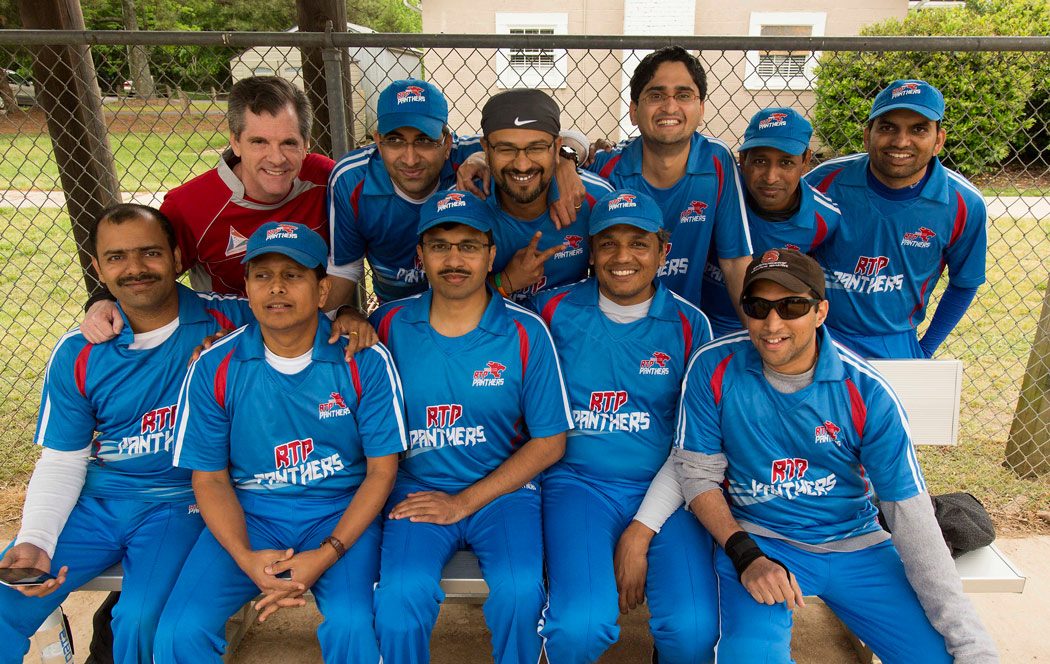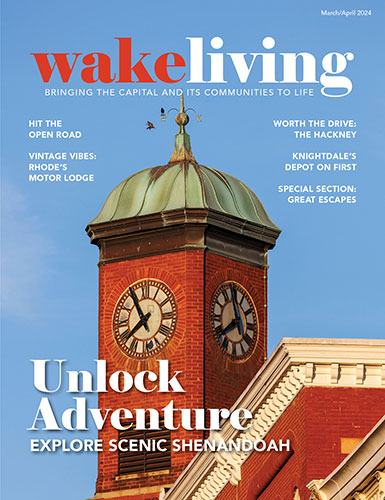Cricket is spreading its wings in the Triangle.
Anirudh Ullal is used to the teasing, comparing the sport he loves to a chirping insect, but this analogy is no joke.
In 2009 the Triangle Cricket League, which Ullal helped found, had 10 teams and about 180 players. Today the group has more than 1,300 people in its database. The majority are from the Triangle, but many drive from High Point, Greensboro, Greenville and Burlington to play here.
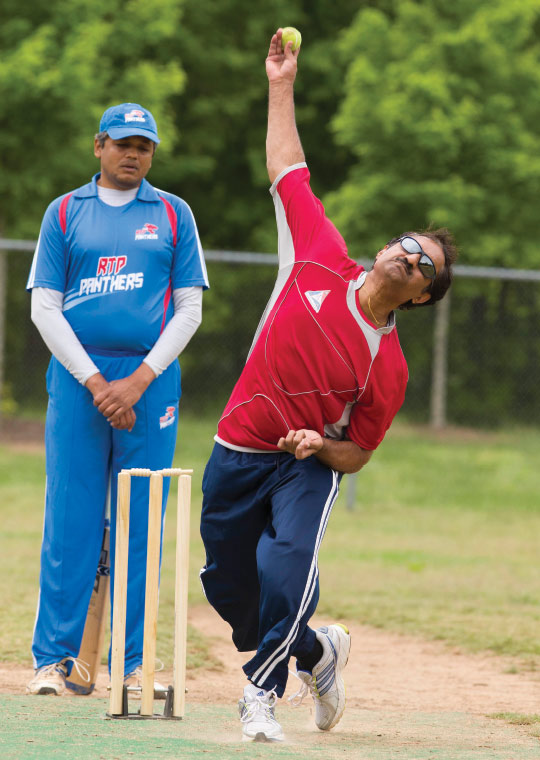
Before a game of hard tennis ball cricket between the Burlington Blues and the RTP Panthers, Kirti Thakkar, right, of team Chikky Chikky Boom Boom practices his bowling as Rahul Patwardhan, left, umpires.
With its diverse population, Morrisville is at the center of this cricket boom; roughly 30 percent of residents here are of South Asian descent, and want to play the game of their youth and share it with their children.
“We have to account for the international flavor of the community here,” said Ullal, who grew up playing cricket in India. “We have a lot of people from India, the Caribbean, New Zealand or England. All these people have grown up playing cricket. We feel it provides an opportunity to reconnect with something we’re all very familiar with from back home.”
Growing the sport
Traditional cricket is played with a hard leather ball and protective gear, and a game can last for days. Players here prefer hard tennis ball cricket, a modified game with a softer ball and no pads, which only lasts a couple of hours. This spring 58 teams, with 11 players each, signed up for hard tennis ball cricket. Several more teams are on the waiting list.
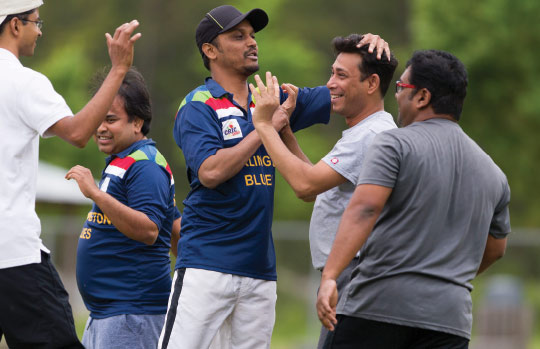
Devankur Thakur (second from right) gets high fives from Burlington Blues teammates after catching a fly ball in their match against the RTP Panthers. Other players are, from left, Ravi Anumak, Sushil Kumar, Kalyan Gummadi and Rajesh Vintha.
“Based on the number of teams and players we have, we are about three fields short,” said Ullal, the league’s secretary. “To accommodate more players — we know there are more people asking for opportunities to play — we would need more fields.”
In Morrisville, cricket is played on multipurpose fields at Cedar Fork District Park, Shiloh Park and Crabtree Creek Nature Park. Other fields are nearby in Durham.
The league also sponsors two 12-week sessions of youth cricket a year. Each session fields 10 teams of 17 to 20 kids each. More than 200 kids participate in the youth cricket program, according to Ullal. The most recent registration filled up in six days.
“The main drive behind starting the Triangle Cricket League was our passion to introduce cricket to kids,” he said.
Town support
The sport has also benefitted from the support of Morrisville officials and their willingness to respond to requests from residents.
“The town has adapted existing fields and parks to enable cricket to be played, along with softball and other traditional sports,” said Mark Stohlman, mayor of Morrisville. “The town has been really good about letting the Triangle Cricket League set up these pitches, maintain them and organize tournaments.”
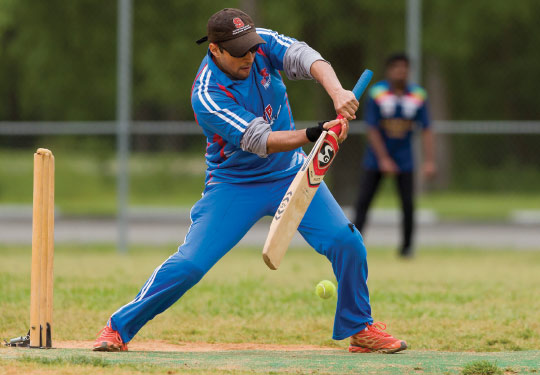
Machiket Bhawe of the RTP Panthers hits the ball during a match against the Burlington Blues at Shiloh Park in Morrisville. The Panthers won the match by 66 runs; the final score was 122-56.
The town benefits as well, from the many visitors attracted by the sport. A National Youth Cricket League tournament held at Morrisville’s Cedar Fork District Park last July attracted hundreds of young players and their families from all over the country.
“The sport is not going to go away. It’s going to grow like crazy,” said Stohlman, who took up the game last year.
On the map
Alvin Kallicharan, a former captain of the West Indies national cricket team and a two-time World Cup champion, moved to the area five years ago and has become an unofficial ambassador for Triangle cricket.
“By speaking to Americans, local people, I want to see how we can spread the sport in different directions so it doesn’t become an Indian thing or West Indian thing or cricket just for expatriates,” he said. “I want everybody to understand the game.”
The recently opened cricket pitch at Morrisville’s Church Street Park will help generate interest throughout the region, Kallicharan says.
“What Morrisville has done will have a tremendous effect toward bringing people from outside North Carolina to play in tournaments on a prestigious ground like this,” he said.
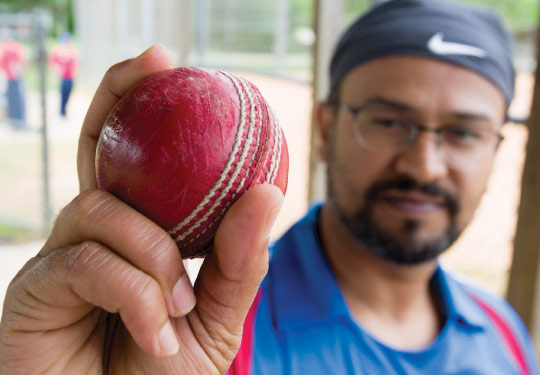
Pankaj Deshpande, captain of the RTP Panthers, holds a hard leather cricket ball. The traditional red ball is used in daytime matches, but a white ball is used when games are played under lights.
As the only regulation-size cricket field between Fort Lauderdale, Fla., and New Jersey, the facility has already attracted out-of-town visitors. In November, officials from the International Cricket Council visited Church Street Park and were impressed by the cricket grounds, Stohlman says.
The town hopes to eventually attract larger national tournaments. In the meantime, the field will host regional tournaments and exhibition games featuring national and international teams.
“This regulation-size cricket field gives Morrisville something that no other town in North Carolina has and puts us on the map as a community that’s innovative, inclusive and willing to do something a little different from the rest of the towns,” Stohlman said.
“It’s already paid off. There’s already so much excitement.”
Cricket Simplified
Much like baseball, two teams take turns hitting and fielding. As one team tries to score runs, the other team fields and tries to get the batter out. The team with the most runs wins.
Terms
- Cricket is played on a roughly elliptical field; the action happens within a 66-foot rectangle in the center called the pitch, which is bordered by two safe areas called creases. Within each crease are the wickets.
- Each team has 11 players, and each team bats once.
- Pitchers, or bowlers, rotate every six pitches, called an over.
- A batsman at bat is a striker; a batsman waiting to bat is a non-striker. Batsmen get one turn at bat, which lasts till they are out.
The game
- For the batting team, one batsman stands at each end of the pitch, in the crease in front of the wicket. The striker must protect his wicket and score runs.
- The bowler throws from one end of the pitch to the striker at the other end.
- The striker hits the ball, and while the ball is in play, the striker and non-striker run between the creases, switching sides. Every time they switch sides safely, a run is scored.
- An inning lasts until 10 outs or a predetermined number of overs, whichever comes first.
Getting out
There are many ways to get out, but among the most common are:
- The bowler hits the wicket with the ball.
- A fielder hits the wicket with the ball while the batsman is out of the crease.
- A hit ball is caught by a fielder, like a pop fly in baseball.
- The batsman uses his leg to stop the ball from hitting the wicket.
Source: High Point Cricket Club
 |
 |
 |
 |
 |
 |
 |
 |
 |
 |
 |
 |




